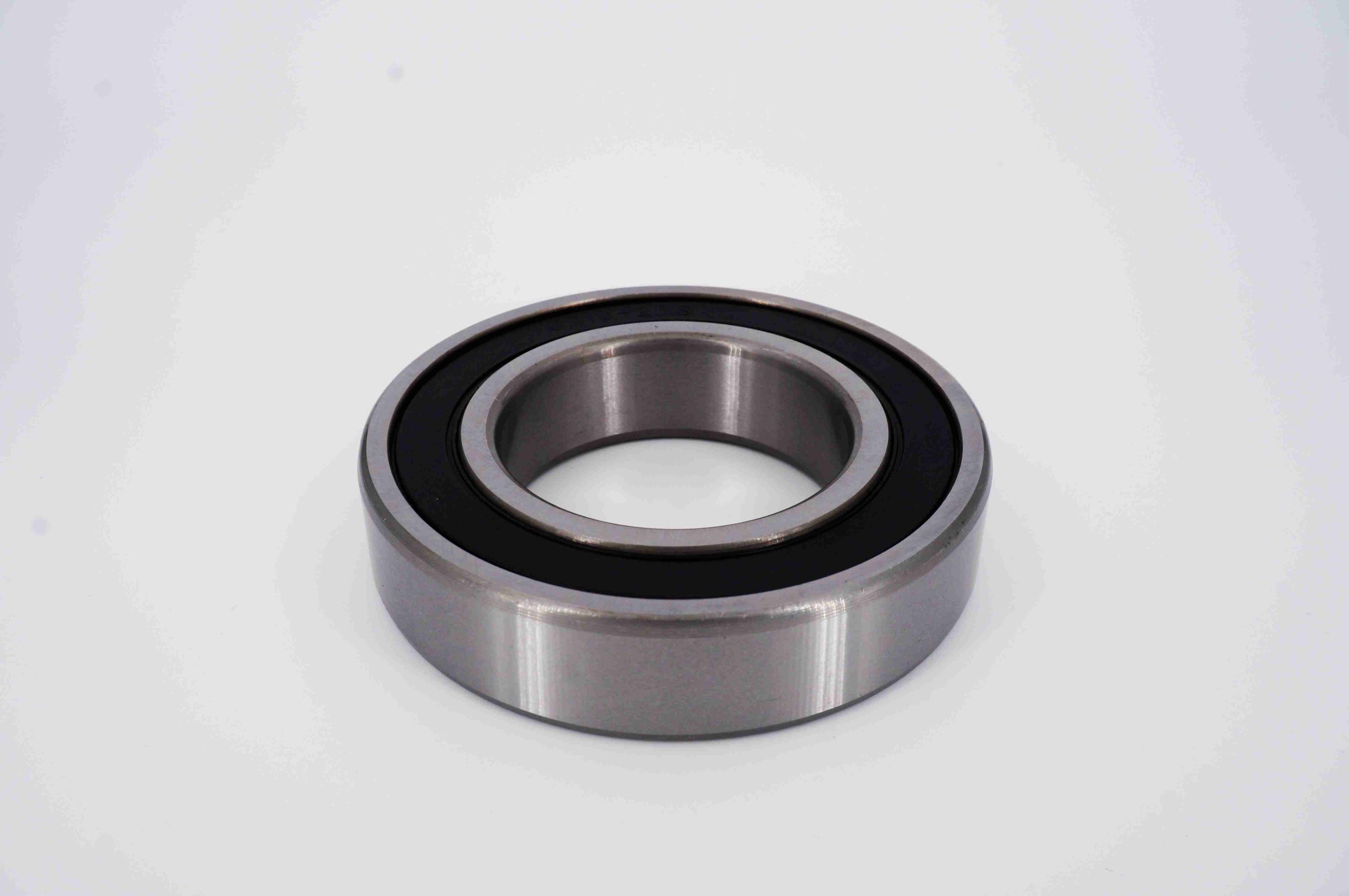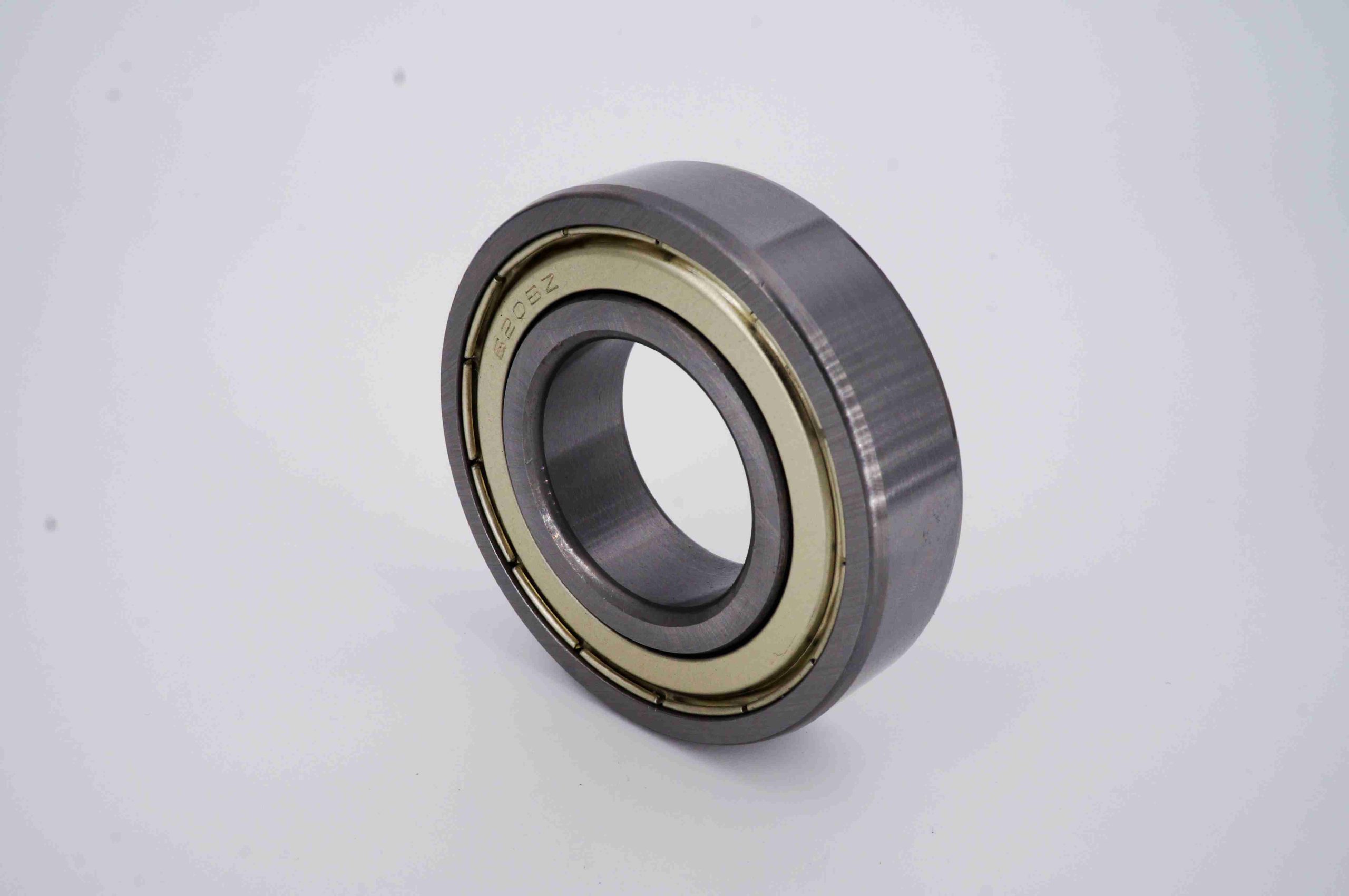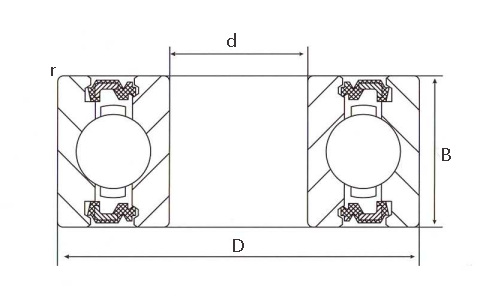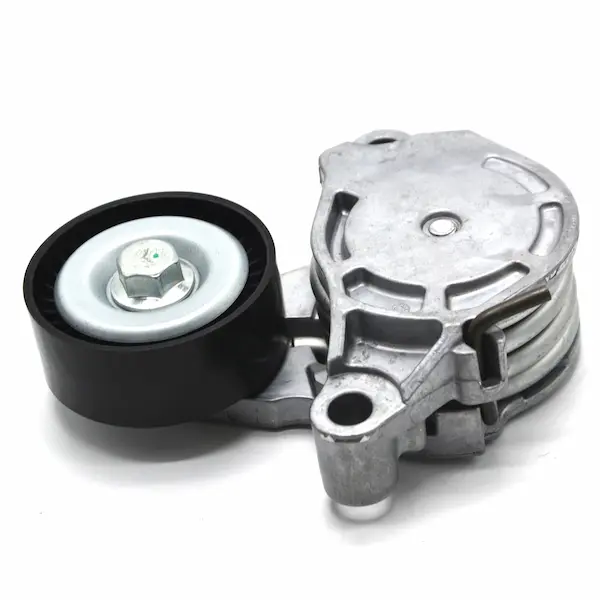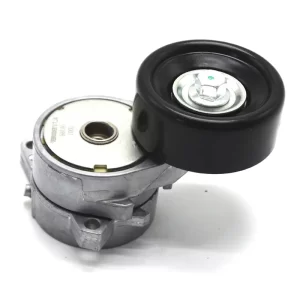Diepe groefkogellagers bestaan uit de volgende hoofdcomponenten:
- Binnenring: Dit is de ring die op de roterende as past. Hij heeft een diepe groef aan de buitenkant om de kogels in te passen.
- Buitenring: Deze ring is stationair en past in het lagerhuis. Net als de binnenring heeft hij een diepe groef aan de binnenkant om de kogels in te plaatsen.
- Kogels: Dit zijn bolvormige wentellichamen die tussen de binnen- en buitenring passen. De kogels dragen de belasting en zorgen ervoor dat het lager soepel draait.
- Retainer (of kooi): Dit onderdeel scheidt de kogels en verdeelt ze gelijkmatig over het lager. De retainer zorgt ervoor dat de kogels gelijkmatig verdeeld zijn, wat wrijving en slijtage vermindert.
- Afdichtingen of schilden (optioneel): Sommige groefkogellagers hebben afdichtingen of schilden om het lager te beschermen tegen verontreinigingen zoals stof en vocht. Afdichtingen bieden een betere bescherming maar voegen wat wrijving toe, terwijl schilden minder bescherming bieden maar met minder wrijving.
Door de diepe groeven in de binnen- en buitenring hebben de kogels meer contact met de loopbanen, waardoor het lager hogere belastingen aankan en efficiënt werkt bij hoge snelheden.
Hieronder staan ook enkele tips voor het onderhouden van diepgroefkogellagers:
- Regelmatige inspectie:Inspecteer de lagers regelmatig op tekenen van slijtage, schade of vervuiling. Controleer op ongewone geluiden, trillingen of een verhoogde bedrijfstemperatuur, die kunnen duiden op problemen.
- Juiste smering:Gebruik het aanbevolen type en de aanbevolen hoeveelheid smeermiddel zoals aangegeven door de fabrikant. Smeer de lagers regelmatig opnieuw om een soepele werking te garanderen. Zorg ervoor dat het smeermiddel schoon en vrij van verontreinigingen is. Zorg er bij afgedichte lagers voor dat de afdichtingen intact zijn.
- Schoon milieu:Houd het lager en de omgeving schoon om vervuiling door stof, vuil en vocht te voorkomen. Gebruik de juiste afdichtingstechnieken om het lager te beschermen tegen verontreiniging van buitenaf.
- Temperatuurregeling:Controleer de bedrijfstemperatuur van de lagers. Te veel warmte kan de levensduur van het lager verkorten. Zorg voor goede ventilatie en koeling in de werkomgeving van het lager.
- Belastingbeheer:Zorg ervoor dat de lagers niet bovenmatig worden belast. Vermijd schokbelastingen of plotselinge schokken die de lagers kunnen beschadigen. Verdeel de belastingen gelijkmatig om plaatselijke spanning op de lageronderdelen te voorkomen.
- Uitlijning en pasvorm:Controleer regelmatig de uitlijning van de lagers om uitlijnfouten te voorkomen, die ongelijkmatige slijtage kunnen veroorzaken. Controleer of het lager goed in zijn behuizing en op de as past.
- Hantering en opslag:Behandel de lagers voorzichtig om fysieke schade te voorkomen. Gebruik schone handschoenen en laat de lagers niet vallen of stoten. Bewaar lagers in een schone, droge omgeving om corrosie en vervuiling te voorkomen.
- Vervanging van versleten lagers:Vervang lagers die tekenen van slijtage, schade of verminderde prestaties vertonen om defecten te voorkomen. Gebruik de juiste vervangende lagers zoals aangegeven door de fabrikant.
- Bewaking en diagnose:Gebruik instrumenten voor conditiebewaking zoals trillingsanalyse en temperatuurbewaking om vroegtijdige tekenen van lagerproblemen op te sporen. Implementeer een preventief onderhoudsprogramma om de lagers regelmatig te controleren en te onderhouden.
Door deze onderhoudstips op te volgen, kun je de prestaties verbeteren en de levensduur van je groefkogellagers verlengen, zodat de betrouwbaarheid en efficiëntie van je machines gegarandeerd zijn.




